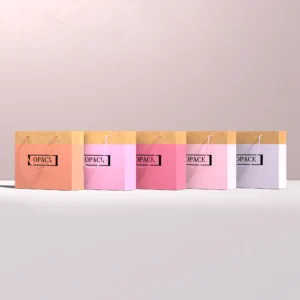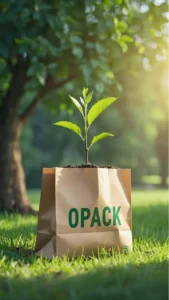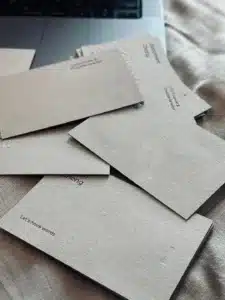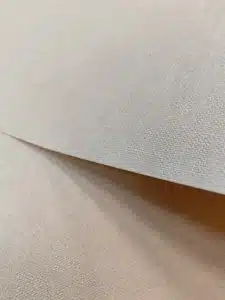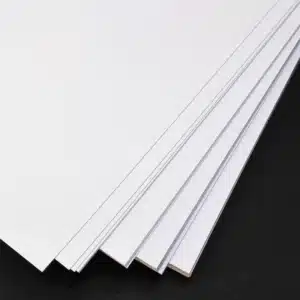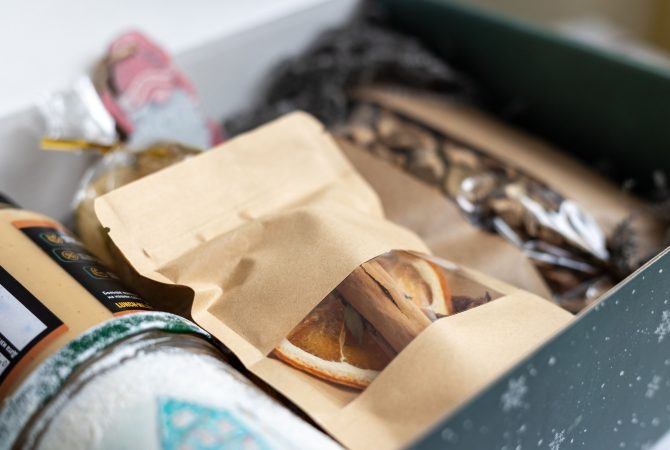Struggling to make your packaging feel premium while staying eco-friendly? It often feels like you have to choose one or the other. But you can achieve both quality and sustainability together.
You can improve packaging quality and maintain sustainability by choosing innovative, eco-friendly materials like paper with FSC or recycled cardboard, and focusing on smart design that enhances aesthetics, functionality, and communicates your brand’s green values effectively.
Today, packaging is not just a container. It’s the first impression of a brand. But as sustainability becomes more important, businesses are stuck between using eco-materials and offering high-end experiences. It’s not an either-or choice. With the right materials and smart design, you can have both.
What Materials Combine Sustainability and High-End Appeal?
Is it really possible to find eco-friendly materials that look and feel luxurious?
Yes, there are several materials that combine environmental responsibility with premium aesthetics. These include whiteboard paper, kraft paper, recycled cardboard, biodegradable materials like sugarcane paper, cotton paper and wove paper and compostable materials.
Choosing the right material is the first big step. It needs to protect the product, look good, feel good, and be genuinely sustainable. Over the years, we’ve worked with many materials, especially for our clothing industry clients, and some really stand out for hitting that perfect balance.
Exploring Top Sustainable & Premium Materials
Let’s break down some great options we often recommend:
Kraft paper is strong, recyclable, and can be enhanced with design for a natural, high-end look—making it ideal for sustainable packaging solutions.
Kraft paper is one of the most reliable and versatile materials I use in sustainable packaging. The name itself means "strength" in German. It’s made using a chemical process that removes lignin and keeps more cellulose, which gives it toughness and elasticity. That’s why it performs so well under stress and tearing.
It’s typically brown, but when bleached, it becomes white and suitable for more refined packaging. I often pair kraft paper with soy-based inks and minimal printing. This lets the texture shine through, offering a clean, rustic luxury. Customers associate this raw texture with authenticity and sustainability.
Here’s how kraft paper stacks up:
| Feature | Description |
|---|---|
| Strength | High tear resistance, supports heavy products |
| Sustainability | 100% recyclable, often made from recycled fiber |
| Texture | Natural, raw, works well with minimalist design |
| Versatility | Can be smooth or rough, brown or white |
| Common Uses | Shopping bags, wraps, mailer boxes, food packs |
Cotton paper uses recycled fabric waste, is acid-free, extremely durable, and feels soft to the touch—making it perfect for premium packaging.
Cotton paper has always felt special to me. When you hold it, there’s a softness that regular paper just doesn’t have. That’s because it’s made from cotton fibers, not wood pulp. It’s the same material used in old books and important documents. And it lasts for decades.
The best part? It’s usually made from cotton byproducts or recycled rags, so it doesn’t involve cutting down trees. This makes it both sustainable and luxurious. Cotton paper also holds ink extremely well, making it perfect for detailed branding or tactile printing techniques like embossing.
Here’s how cotton paper compares:
| Feature | Description |
|---|---|
| Texture | Soft, elegant, luxurious feel |
| Durability | Long-lasting, resists tearing and fading |
| Sustainability | Made from cotton waste, tree-free |
| Applications | Stationery, invites, certificates, luxury boxes |
| Print Quality | Absorbs ink well, ideal for fine detail |
Wove paper has a smooth, fabric-like surface perfect for fine graphics and tactile branding, making it a strong contender for elegant packaging.
Wove paper might not sound glamorous, but it’s one of the most refined materials I’ve worked with. It has no visible lines or textures, unlike laid paper, so the surface is perfectly smooth. This smoothness makes it ideal for high-resolution printing.
If you’re aiming for a clean and professional look, wove paper shines. It brings out the sharpness in colors and text, which matters when your packaging is the first thing a customer sees. It’s also suitable for writing or drawing, so it works well for packaging that doubles as stationery or interactive inserts.
Here’s what makes it special:
| Feature | Description |
|---|---|
| Surface Texture | Smooth and uniform, ideal for graphics |
| Material | Usually wood pulp, finely woven mold |
| Print Compatibility | Excellent detail, no texture interference |
| Uses | Fine art prints, high-end stationery, product wraps |
| Feel | Subtle, fabric-like under light |
Whiteboard paper offers a bright, printable surface ideal for retail displays and food packaging, with strong structure and good folding properties.
Whiteboard delivered every time.Whiteboard paper, or solid bleached sulfate (SBS), is one of the most used materials in retail and food packaging. It’s made from bleached kraft pulp and has a smooth, white surface that’s great for printing. You’ve probably held it before—it’s the box your cereal or luxury skincare came in.
The key benefit is appearance. It looks clean, fresh, and upscale. But it’s also strong enough to hold its shape and resist creases during folding. I’ve worked on folding cartons for cosmetics where the structure had to be both attractive and protective.
Take a look at its strengths:
| Feature | Description |
|---|---|
| Surface | White, printable, often clay-coated |
| Structure | Good stiffness, resists denting |
| Material | Virgin or recycled pulp, sometimes layered |
| Applications | Food cartons, retail boxes, luxury packaging |
| Print Performance | Holds high-resolution graphics, embossing, foiling |
Choosing the right one depends on your product and brand image, but options definitely exist to be both green and gorgeous.
Why Does Design Play a Crucial Role in Perceived Quality?
Can good design really make sustainable packaging look more premium?
Yes. Design is what elevates eco-friendly materials to luxury status. It adds aesthetic value, improves functionality, and connects with consumer values.
contact me
Design isn’t just about looking pretty. It’s the tool that makes eco-materials feel premium. Let me give you an example—Vegan Bunny uses kraft mailer boxes printed with soy-based ink. Just white on kraft. Nothing fancy. But because it aligns with their clean, ethical brand, the result feels both sophisticated and intentional.
Research shows that when design aligns with sustainability, it influences buying behavior. Around 37% of U.S. consumers prioritize sustainability. More than 30% are willing to pay extra for it. And that number climbs when the packaging feels like it belongs to a luxury brand.
Design also solves real-world problems. A mailer box that turns into a toy, like the one used by Monday’s Child, adds extra value. It extends the life of the packaging and builds a stronger emotional connection. Suddenly, it’s not just a box—it’s part of the experience.
How Design Elevates Sustainable Packaging
Let’s look at why design matters so much:
- Making Sustainability Beautiful: Good design makes eco-materials look fantastic. Think about Kraft paper again. On its own, it’s simple. But with clever graphics, maybe using soy-based inks like one of our clients did for their vegan candles, it looks incredibly chic and perfectly reflects the brand’s ethos. Advanced printing can make recycled cardboard look just as sharp as virgin board. Aesthetics are key – people judge quality visually first.
- Functionality Equals Quality: Packaging needs to do its job. A well-designed box protects the product effectively. If it arrives damaged because the eco-packaging was flimsy, the customer won’t care how sustainable it was. Design also includes thinking about ease of opening, closing, and potential reuse. We worked with a children’s clothing company whose mailer box was designed to turn into a doll’s house! That adds huge value and customers associate that clever functionality with overall quality.
- Communicating Values and Boosting Worth: Design tells your brand’s story. Clear labeling about recycled content or compostability, combined with a design that feels premium, reassures customers. Research shows many people (around 30%) are actually willing to pay more for products in sustainable packaging, especially if it looks good and aligns with their values. Good design makes that sustainable choice feel like an upgrade, not a compromise.
- The Unboxing Experience: Design creates that ‘wow’ moment when someone opens their package. A simple, elegant design using recycled materials, like a minimalist Kraft box we created for a 3D-printed decor brand, can feel very sophisticated. That positive first impression significantly boosts how customers perceive the product’s quality inside.
Here’s how I break it down when working with clients:
| Design Element | Benefit | Example Application |
|---|---|---|
| Minimalism | Communicates premium and waste-consciousness | Simple Kradt paper with debossed logos |
| Custom Graphics | Makes plain materials pop | Kraft mailers with bold, clean illustrations |
| Smart Structures | Adds functionality and value | Foldable boxes that become reusable drawers |
| Eco-Friendly Inks | Reinforces brand values | Soy or algae-based printing on recycled boxes |
| Reusability | Extends product life, reduces waste | Dollhouse mailer box by Monday’s Child |
Design bridges perception and function. A beautifully designed compostable pouch doesn’t just biodegrade—it feels better in hand, communicates purpose, and creates trust.
What does the future of sustainable packaging look like?
Will sustainability always mean compromise, or are we getting close to a new standard?
The future of sustainable packaging is a blend of innovation, user-centered design, and smarter materials. We’re not compromising anymore—we’re redefining premium.
One surprising area where design matters more than we think is print performance. Take biodegradable films made of recycled fruit and vegetable skins. They may need different printing setups to hold color well and resist wear. If you skip this step, you risk a dull or uneven look, which damages the premium feel.
In luxury industries like beauty and cosmetics, this detail is non-negotiable. Customers expect perfect color reproduction. That’s why I always work with printers who understand the technical needs of these materials. You need eco-friendly inks, yes, but you also need them to work well on alternative surfaces.
We’re also seeing trends toward regional customization. For example, in Europe and the U.S., designs that emphasize ocean waste reduction do well. In Asia and Latin America, packaging that addresses air or water pollution makes a stronger connection. So sustainability is global, but design needs to speak local.
Innovation is pushing this even further. Smart QR codes on recyclable packaging, refillable packs, and packaging that breaks down with embedded seeds—these are all ways we’re turning sustainability into something exciting, not restrictive.
Conclusion
Improving packaging quality while staying sustainable isn’t about compromise. It’s about smart choices in materials like Tencel or recycled cardboard, combined with thoughtful, functional, and beautiful design that truly connects with customers.

